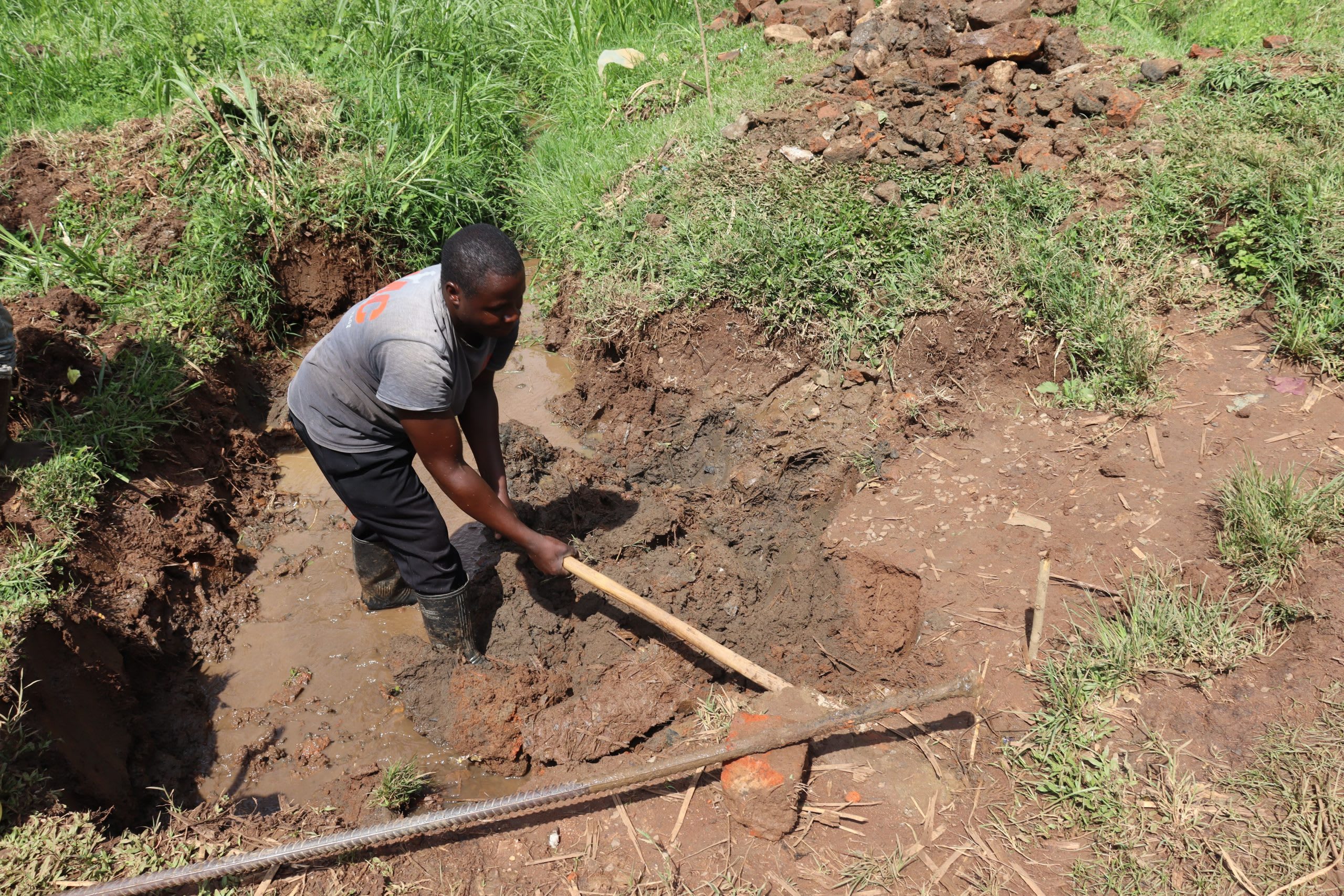Alufu Community has 210 members who all rely on Wale Spring. Due to its state of disrepair, the spring is very difficult to access. Not only is it unaccessible, it's dangerous. The source is open to contamination, creating a daily health hazard for the whole community.
"The path that leads to the spring is quite steep and slippery, which can result in frequent falls for community members. There are visible sources of contamination around the waterpoint, which may be the cause of reported waterborne illnesses among residents," said Field Officer Rachel Obura.

Jackline making one of her seven daily trips for water.
This community of farmers spends a lot of their precious time collecting water. All the time they sacrifice to get water is not utilized to enhance their livelihoods and income. Jackline Khasiala Obuya, a 35-year-old farmer, is familiar with the exhausting cycle.

Jackline Khasiala Obuya.
"Water keeps me alive. By this, I mean water is crucial for almost all the activities carried out by the body. Water keeps me fresh and hydrated throughout the day. Water is also important to me in crop growing. My crops and that of the community as a whole depend on water to survive, thrive, and produce yield, which is my main source of income," Jackline shared.
"During prolonged drought, our neighboring community comes to fetch water at our spring when their source dries up. During this time, the spring faces congestion, leading to time wastage," Jackline continued.

Jackline collecting water from the unprotected spring.
Not only do they give up so much to get water, but the water they collect makes them sick. To risk your life and livelihood every day for water is disheartening.
"The spring is no longer safe for use due to its worn-out structure, which puts users' lives at risk and compromises water quality," she continued.

Jackline at her home.
Jackline added, "A lot has happened. We hear of community members getting injured in the course of fetching water due to the steep slope and the worn-out stairs. To avoid injuries, people need to be extra careful when coming in and out of the waterpoint."
Protecting this community's spring will give Jackline and the rest of her community the tools they need to thrive.
"Constructing a high-quality spring box and taking measures to protect the catchment area will ensure the community has access to clean, safe, and naturally filtered water. Implementing proper fencing will help keep animals away from the area, which will, in turn, help maintain the water source's purity. Additionally, a well-designed drainage channel and tiles in place will ensure that the drawing point remains clean and easily accessible," Rachel concluded.

Jackline with her livestock.
"A properly built new waterpoint can guarantee the safety of everyone by providing clean and safe water. With the availability of a new water source, I can focus my energy on tending to my farm instead of wasting time searching for water," Jackline concluded.
Steps Toward a Solution
Our technical experts worked with the local community to identify the most effective solution to their water crisis. They decided to safeguard the existing flowing spring.
Spring Protection
Springs are natural water sources that originate from deep underground. As water travels through various layers of the earth, it undergoes a natural filtration process, making it cleaner and safer to drink. To protect these spring sources from contamination, we construct a waterproof cement structure around layers of clay, stone, and soil. This design channels the spring water through a discharge pipe, facilitating easier, faster, and cleaner water collection.
Chlorine Dispenser
As an extra measure towards water quality safety, uniquely engineered chlorine dispensers are installed at all of our spring protection projects so community members can treat their water with pre-measured doses of chlorine. The chlorine treats any residual contamination and stays active for two to three days, ensuring water stays safe to use even when stored at home. Chlorine delivery and maintenance of the dispensers are part of our ongoing community support.
Community Education & Ownership
Hygiene and sanitation training are integral to our water projects. Training is tailored to each community's specific needs and includes key topics such as proper water handling, improved hygiene practices, disease transmission prevention, and care of the new water point. Safe water and improved hygiene habits foster a healthier future for everyone in the community. Encouraged and supported by the guidance of our team, a water user committee representative of the community's diverse members assumes responsibility for maintaining the water point, often gathering fees to ensure its upkeep.

 Protected Spring
Protected Spring
 Rehabilitation Project
Rehabilitation Project

















